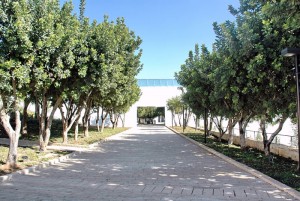JERUSALEM: My people — the Jewish people — have the reputation of being both opinionated and cantankerous. Israel’s founding father, David Ben-Gurion, once remarked that “for every two Jews, there are three opinions.” When his successor as Prime Minister, Golda Meir, was confronted by President Lyndon Johnson — who complained that he had to satisfy 150 million voters — Meir responded that she had to placate two million prime ministers.
So it’s been especially remarkable that my conversations this week with Israelis reveal a broad consensus of popular support for the government’s decision last month to trade more than 1000 prisoners for the safe return of just one Israeli soldier, Gilad Shalit. Indeed, Israel’s controversial prime minister, Benjamin Netanyahu, is surging in the nation’s public opinion polls since the prisoner swap.
How is this consensus possible? Upon first glance, the trade seemed highly imbalanced and unfair. And many analysts have complained that such a deal only encourages further hostage taking. Remember the maxim, “Never negotiate with terrorists”?
Yesterday in Jerusalem, I learned the powerful lesson why.
 The first clue came in a visit to an Immigration Absorption Center in the Jerusalem suburbs. I had the extraordinary opportunity to meet with dozens of recent immigrants from Ethiopia, a small representation of the more than 120,000 Ethiopian Jews who have emigrated to Israel in recent decades, most dramatically in two covert military operations, Operation Moses (1984) and Operation Solomon (1991). With their lives in danger due to famine and political unrest, thousands upon thousands were airlifted to Israel to enable them to begin their lives anew, free to worship their God. And in the intervening decades, Israel has spent many millions of dollars to educate, feed, clothe, shelter and prepare these immigrants for modern life.
The first clue came in a visit to an Immigration Absorption Center in the Jerusalem suburbs. I had the extraordinary opportunity to meet with dozens of recent immigrants from Ethiopia, a small representation of the more than 120,000 Ethiopian Jews who have emigrated to Israel in recent decades, most dramatically in two covert military operations, Operation Moses (1984) and Operation Solomon (1991). With their lives in danger due to famine and political unrest, thousands upon thousands were airlifted to Israel to enable them to begin their lives anew, free to worship their God. And in the intervening decades, Israel has spent many millions of dollars to educate, feed, clothe, shelter and prepare these immigrants for modern life.
The second clue came in a visit to Yad Vashem, the world’s most important museum and memorial to the six million Jews and nearly six million Gentiles who were brutally murdered by the Nazis and their collaborators in the Holocaust. It is impossible for me to adequately convey the messages and lessons of Yad Vashem, other than to insist that you put a visit to that museum, or its counterpart in Washington, on your bucket list.
 But I can share one powerful theme. Amidst the horror, carnage, and nauseating stories about the darkest side of human nature, are some extraordinary stories of the beauty, spirit, courage, and yes, holiness, of those who took actions to protect their fellow men and women. Within the museum, there are dozens of tributes and memorials to the thousands of Gentiles who risked their lives to save the lives of their Jewish neighbors. And in the “Avenue of the Righteous Among the Nations,” (at left) trees, plaques and statues honor those who emblemize the very best of humanity.
But I can share one powerful theme. Amidst the horror, carnage, and nauseating stories about the darkest side of human nature, are some extraordinary stories of the beauty, spirit, courage, and yes, holiness, of those who took actions to protect their fellow men and women. Within the museum, there are dozens of tributes and memorials to the thousands of Gentiles who risked their lives to save the lives of their Jewish neighbors. And in the “Avenue of the Righteous Among the Nations,” (at left) trees, plaques and statues honor those who emblemize the very best of humanity.
All of these monuments tell some powerful stories. One is of Metropolitan Kyrill, the leader of the Bulgarian Orthodox Church, who threatened to lay down on Sofia’s train tracks to prevent the deportation of that country’s 8000 Jews to the Nazi death camps. Kyrill powerfully quoted the Book of Ruth: “Wherever you go, I will go; and where you lodge, I will lodge; your people shall be my people, and your God my God.” And not a single Bulgarian Jew perished in the Holocaust.
There’s also the story of the brave Kosovo couple who hid their Jewish neighbors from the Nazi troops, and were subsequently honored at Yad Vashem as among The Righteous of the Nations. When the lives of that late couple’s children and grandchildren were threatened in the Balkan conflicts of the late 1990s, the Israeli Mossad led a secret mission to rescue this family and bring them to Israel.
What explains these remarkable sacrifices?
It is a fundamental principle of Judaism that is most poignantly illustrated in my favorite scene in all of film history. In Schindler’s List, the most famous of The Righteous Among the Nations, Oskar Schindler, is given a gift by the hundreds of his factory workers whose lives he saved from Nazi extermination: a ring with the Hebrew inscription of the Talmud’s most inspirational teaching:
“Whoever saves one life, saves the world entire.”
Watch the scene below, and just try not to cry:
So there’s your explanation: for the Ethiopian rescue and absorption, for the Kosovo mission, and especially for the prisoner swap for Gilad Shalit:
Saving one life is equivalent to saving the entire world.
It’s a message that all of us should take closely to heart.
And it’s a lesson that makes me so proud to be a Zionist, and so honored to be a Jew.









Leave a Reply